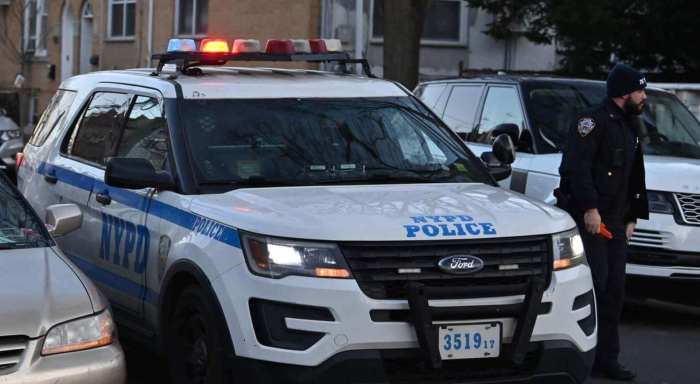BY HELAINA HOVITZ | On Mon., Oct. 8, the New York City Rescue Mission in Tribeca will celebrate 140 years in existence, hosting a ceremony that will mark a season of continued change for Lower Manhattan’s only remaining homeless shelter.
Construction of a much-needed three-story addition to the shelter’s 90 Lafayette St. building is currently underway, making room for 180 additional beds and 75 emergency sleep mats. While these changes spell great things to come for the homeless, the shelter is consequently facing some major setbacks in the interim period.
Until construction is completed in late 2013, there will be a shortage of space. Instead of providing 99 bunk beds for homeless men, the rescue mission is now temporarily reduced to 24 bunk beds on the second floor and 36 mobile mats on the ground floor. This means there will be more homeless people on the street, according to Joe Little, the mission’s church director and community relations manager.
The day the construction crew arrived was also new executive director Craig Mayes’s first day.
Mayes arrived at the mission at a difficult juncture. As the weather turns colder, he and other mission staff will bear the grim job of turning away more people than usual due to a lack of space. During this time, staff will be making calls to other city shelters in hopes of finding available beds.
As it stands, more than 500 people frequent the Tribeca shelter daily, a number that continues to grow since Mayor Bloomberg’s budget cuts forced John Heuss House to close its shelter on Beaver Street.
Mayes is currently tasked with keeping the program running during the renovation period while playing “musical office chairs,” as he calls it — which entails relocating offices multiple times a week based on where construction is taking place in the building.
The loud noise created by the construction has also proven disruptive to residents during in-house computer classes. Mayes has explored other possible venues for the shelter’s day programming, but has been finding that people aren’t “opening their arms up wide.”
“When you talk about recovery, you’re talking about drug addicts, alcoholics and criminals,” he said. “Office buildings and educational buildings aren’t keen on sharing their space.”
The noisier part of the work will end in about a month, but the third floor dormitories will remain closed until the renovations are completed at the end of next year.
By Little’s estimates, the number of people seeking food has grown from 400 to 500 people a day in the past year. Most of the mission’s food comes in on a truck from organizations such as City Harvest.
As of late, the mission has been receiving food donations from neighborhood shops like Dickson’s Farmstand Meats and Orwasher’s Bakery, located at the new gourmet market All Good Things, at 102 Franklin St. Orwasher’s owner Keith Cohen, who got his start working at the nearby bakery Tribeca Oven about ten years ago, felt that donating food would be a great way to give back to the Downtown community.
“I always tell them that we’ll take whatever they give us, so I’ve recently been taking a shopping cart with me,” said mission resident Andre Lowe, who picks up the food each night. “Our most recent take was 98 pounds of bread.”
While the rescue mission is grateful for what City Harvest provides, foods such as bread are much fresher if they are locally provided.
Zucker’s Bagels at 146 Chambers St. has also begun donating an average of 60 bagels with cream cheese a week for the mission’s Monday morning breakfast.
The additional food intake is partially a result of the efforts of another new staff member, David Knoche. Knoche, the mission’s newly appointed volunteer manager, spends his days reaching out to individuals and businesses for assistance. As a result, he has Wells Fargo, Starbucks, Columbia University and New York University on board.
“He creates relationships rather than acquaintances, and his enthusiasm has been turning one-time, temporary or seasonal donations and volunteers into permanent ones,” said Little of Knoche’s work. Previously, Anita VarnHagen, wife of former executive director James VarnHagen, helped to coordinate volunteers on her own time.
The mission’s anniversary party — held on Oct. 2 at the Calvary Baptist Church in midtown — is intended to be a “night of celebration, past, present and future.” The party will celebrate the VarnHagen couple’s 22 years of service, the growth and expansion of the mission and the arrival of its new staff members.
Though construction will continue through next year, men in recovery at the mission say they are willing to withstand the noise, dust and other inconveniences to ensure that even more homeless people will be helped down the road.
“The jackhammering isn’t that bad—this isn’t my bedroom, after all,” said resident Ronny Jones. “I knew what the conditions were when I moved in, and [it] is well worth what I’m getting back.”
The N.Y.C. Rescue Mission was founded by Jerry McAuley in 1872 as a 12-step religious recovery program for males. After being released from Sing Sing prison, McAuley started the shelter with a desire to help the “hurting and desolate men of the city,” according to Little. McAuley’s supposed vision, says the shelter, was “to clean men up on the outside while God cleaned them up on the inside.”


































